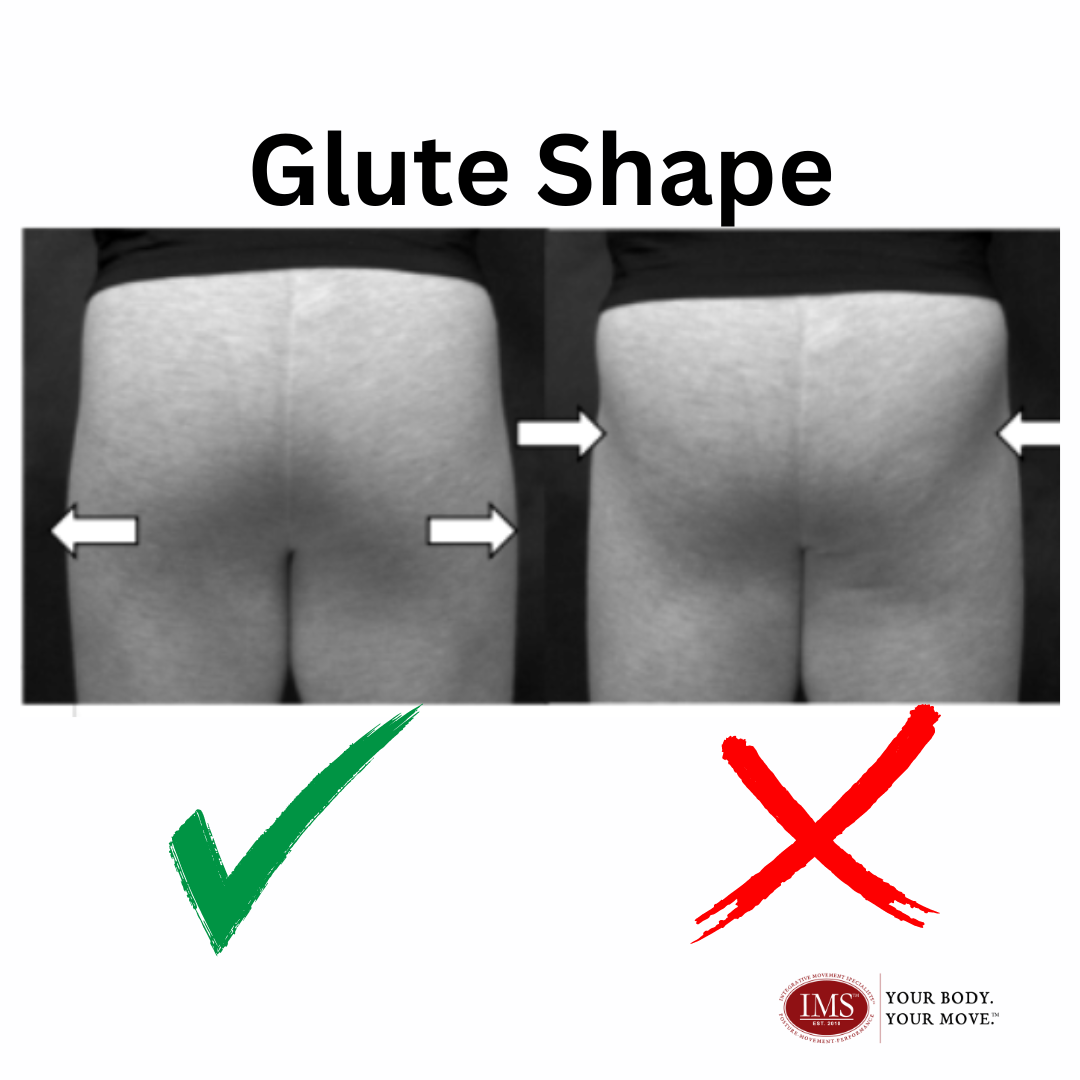Free Your Hips

In our last blog post, we shared how and why your hips may be tight or feel uncomfortable. We also covered some habits you can work on throughout your day that may be contributing to your hip discomfort.
Today we will cover a way to self-assess how your hips are feeling and a self-release technique you can use to help free up your hips.
First, let’s have you check a couple of things.
Start by standing.
Place your hands on your hips with your fingers facing down towards the floor.
Run your hands down the sides of your hips.
Move them back slightly and repeat running your hands down the sides.
Do you notice a divot or even a slight indentation under your hands?
See the picture below.

If you note an indentation, you are likely gripping or squeezing your glutes on the side(s).
Second assessment.
Stand with your feet comfortably together.
Rest your hands on your hips (pictured below)
Turn your whole body to your right as far as you can comfortably go.
Return to the center.
Turn your whole body to your left as far as you can comfortably go.
Return to the center.
Repeat as above 3 times.

Do you notice you do not turn as far to one side?
Next, you can practice the muscle release as pictured below.
If you do not have a Rollga (as in the picture)
You can use a foam roller or a tennis ball, etc.
If you cannot cross the leg, you can put the leg in the same position on the floor.
Can’t get on the floor? Do this against a wall.

You will place the device in the area on your glutes as seen below.
The device or pressure will go in the area highlighted by the triangles and the red circle.
It may feel tender but, the pressure should not be so uncomfortable that you feel yourself tensing or unable to easily breathe.
Find a tender spot and stay on it. Take 3-5 breaths and imagine the muscle melting over the device.
Roll or move the device to one more tender spot in the highlighted area and repeat as above.
Next, you will need to activate the deeper muscles of your hip to improve the balance of the muscles around your hip joint.

Either lying down on your back or sitting perched at the end of a chair, with your feet flat and your hands on the outsides of your thighs. (see picture below).
Gently inhale through your nose, start your exhale and with 1% max effort send your thighs out towards your hands. As you inhale relax.
Repeat the above five times. No more than 1% effort.
Lastly, you need to use the new motion in your hip in an everyday activity like a squat. A movement we must do when sitting.
Place your hands on either side of a door handle. (As pictured below.)

- Check that your weight is equally distributed between the base of your big toe, the base of your small toe, and the heel.
- Take in a gentle breath through your nose, start you exhale, and begin to squat as though you are sitting in a chair.
- Start your inhale.
- Rise back to standing.
- As you come up, avoid squeezing your glutes or bringing your hips and pelvis forward.
- Your glutes should stay behind you, not underneath your torso.
- Repeat for 5 repetitions
Now recheck your assessments from the beginning.
- Do you note improved movement in your rotation?
- Are the divots or indentations less on the sides of your hips?
Our glutes are round muscles. See the pictures below. The indentions on the sides of our hips can be indicative that we are not using our glutes effectively.
We would love to hear your feedback and see how you did with this exercise.
Have questions about this newsletter, your hips, or others? Reach out. We can help.
P.S.
Keys to a good squat:
- Keep your weight over the three points above. Stop the movement if you feel your weight shifting into your heels.
- Let your glutes relax with the exhale to create room in the hip joint for movement.
- Your glutes or butt are going to go back as go into the movement. They should not go straight down toward the floor.
- Your knees will likely go over your toes and that is ok.
- As you come up from the squat avoid squeezing your glutes or moving your pelvis forward or under you. Your glutes work instinctively as you rise back out of the squat.

